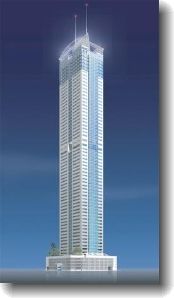Maintenance and Service Fees (Sinking Funds)
Among charges or fees associated with property maintenance, a sinking fund ought to be considered to address one-off expenses. The following article puts a spotlight on this issue.
Maintenance Charges Heading for a Showdown?Return to MAG 218 Community homepage.
Developers overlooking the importance of sinking fund to protect investors.
Freehold investors may face serious maintenance fee repercussions in some local developments within the next few years caused by inadequate research and total lack of contractual agreements. The most alarming is the complete overlooking of a sinking fund by most developers.
In more cases than is good for the market, developers are just putting together fixed rates as their maintenance and service charges, with the lower rates used as bait for investors. Blanket rates ranging from Dh6 to Dh15 per square foot are quoted without any specifications on ho the money will be spent, let alone including a sinking fund.
"in the US and UK and in most mature real estate markets, a sinking fund takes in between 20 to 25 per cent of the collected annual charges, which is not necessarily the case in Dubai," says Dilip Khatwani, Chief Executive of Dubai-based Reliance Facilities Management.
"Ideally, sinking funds are raised from the owners of the property to take care of depreciation and replace equipment when necessary. In most markets, these are covered by owner contributions from the maintenance charges. Freehold owners in Dubai could find that no provision has been made for replacing key equipment within their properties. Instead they might be faced with one-off charges that they might have to bear in full or part."
In many of the new freehold contracts, there is also no provision for breakdown insurance, which is a given in most overseas markets. For instance, given the high usage of chillers in this part of the world, which could raise the frequency of breakdowns, this might prove a potential flash-point between the owner and developer on who should pay to set it right.
"Energy calculations are very critical in putting together the maintenance charges. The developer has to put in play the diversity factors--what might be the standard in one market need not be the basis here. What is happening in Dubai is both buyers and sellers look at how low the quoted rates are instead of looking a various expenses which should be covered in the service charges. though things are changing slowly, developers are not taking into consideration facility management requirements at the design stage," says Khatwani.
That is amply borne by the fact that very few developments, even top-notch commercial destination, had back-up generators during the recent power breakdown in Dubai. the issue of the optimum maintenance charge does not end with the developer. In the local market, there is some resistance among maintenance charges higher than Dh6 to Dh8 a square foot on a yearly basis. A case in point was the resistance to Emaar's recent attempt to raise their tariffs to Dh15 a square foot.
"Being transparent about the various expenses that the tariffs will be used for could be a good way to start. If the developer pursues it with entities such as an owners' association, a common ground can be found for all," says Katwani.
Source: Manoj Nair, Property Weekly, 29 June 2005.




0 Comments:
Post a Comment
<< Home